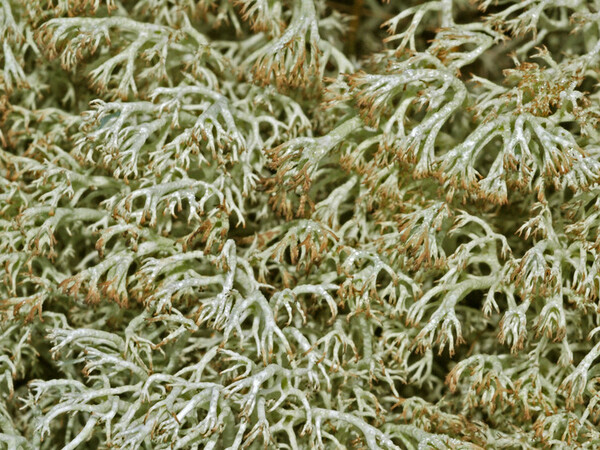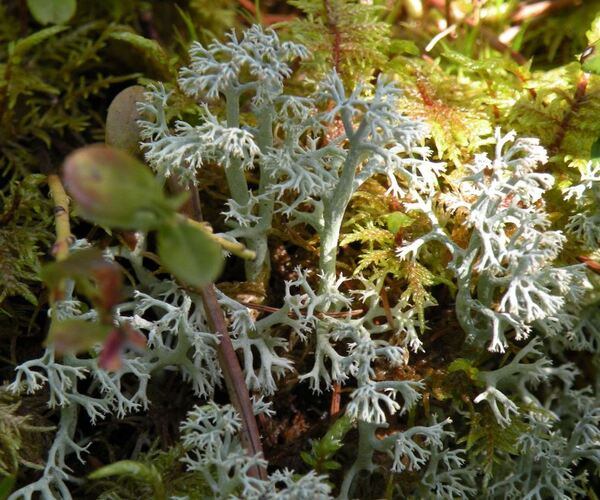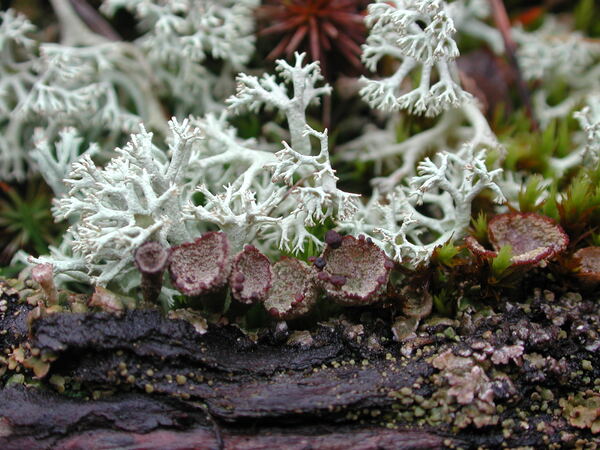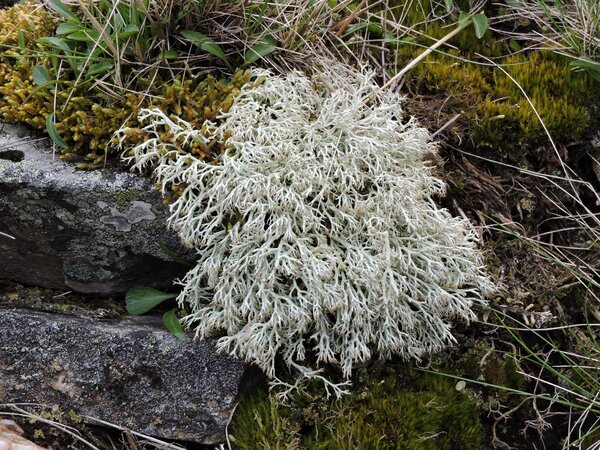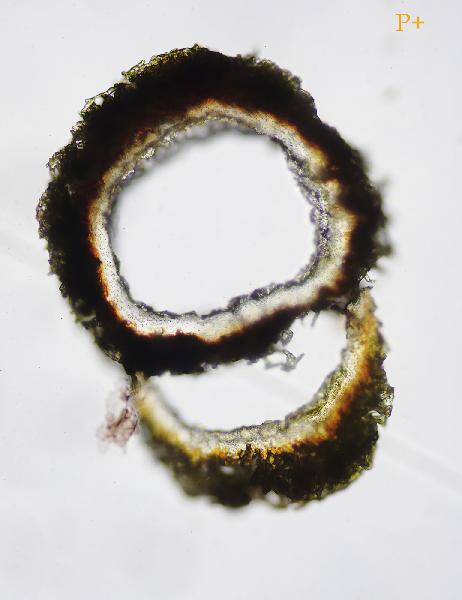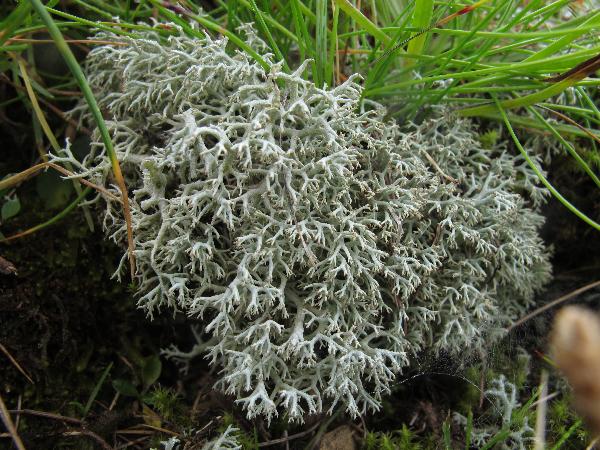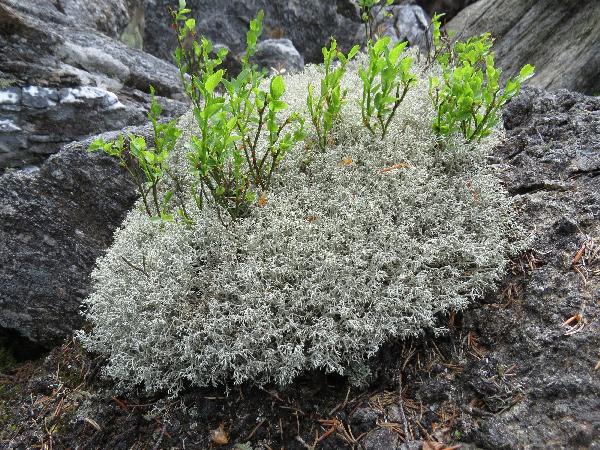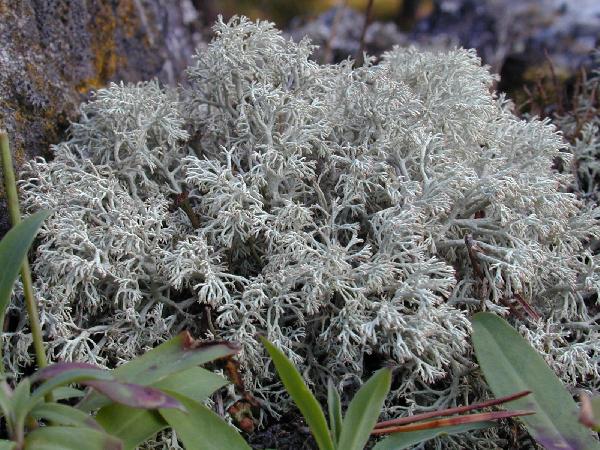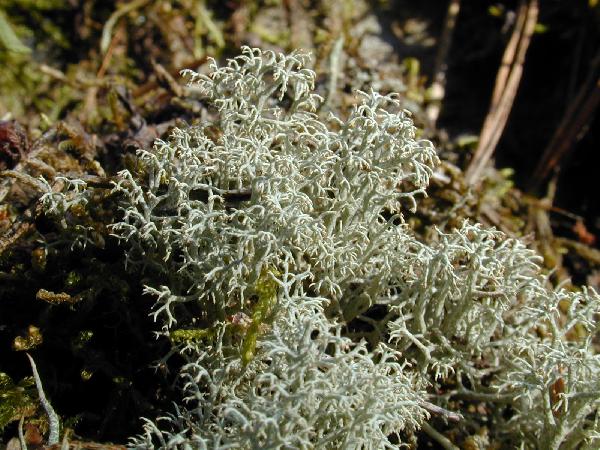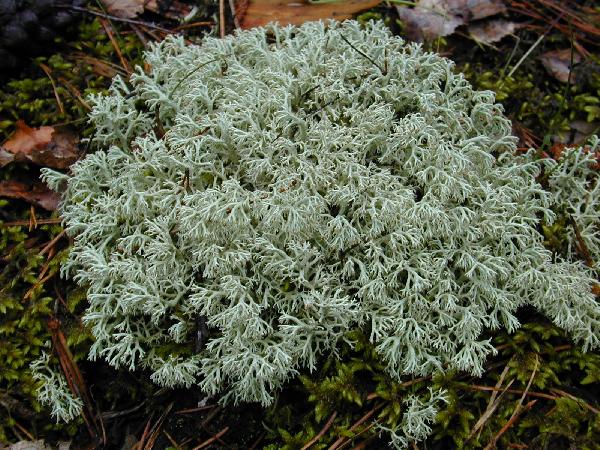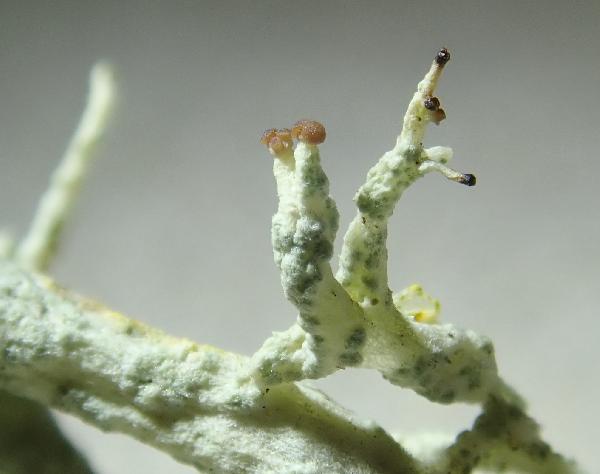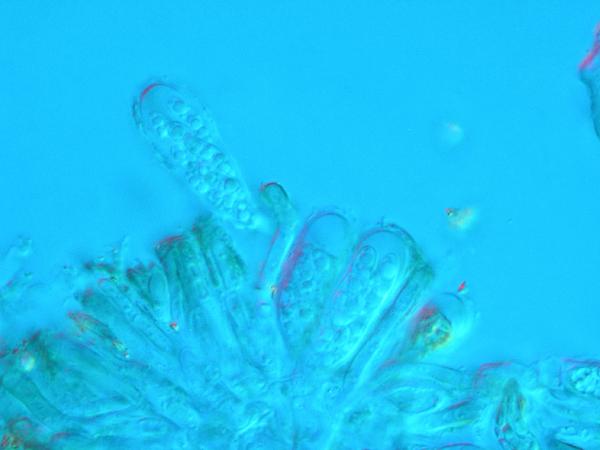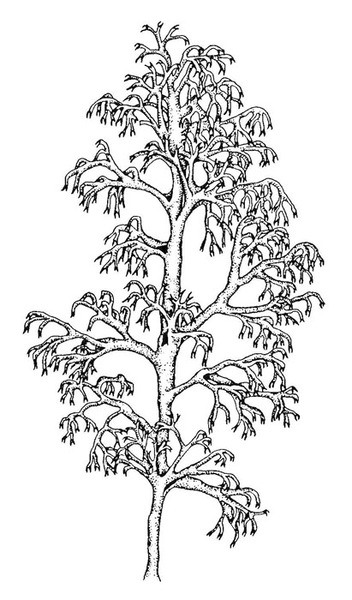Cladonia arbuscula (Wallr.) Flot.
in Wendt, Therm. Warmbrunn: 94, 1839. Basionym: Patellaria foliacea var. arbuscula Wallr. - Naturgesch. Säulchen-Flecht.: 169, 1829.
Synonyms: Cladina arbuscula (Wallr.) Hale & W.L. Culb.; Cladina arbuscula subsp. squarrosa (Wallr.) Burgaz; Cladonia arbuscula subsp. squarrosa (Wallr.) Ruoss; Cladonia sylvatica auct.; Patellaria arbuscula (Wallr.) Wallr.; Patellaria coccinea var. squarrosa Wallr.
Distribution: N - Frl (Ravera & al. 2015), Ven (Nimis 1994, Nascimbene & Caniglia 1997, 2003c, Caniglia & al. 1999, 2000, Nascimbene 2005c, Giovagnoli & Tasinazzo 2014, Ravera & al. 2015), TAA (Caniglia & al. 2002, Nascimbene 2001b, 2003, 2008b, 2013, Nascimbene & al. 2005, 2006, 2022, Brackel 2013, Bilovitz & al. 2014, Watson 2014, Ravera & al. 2015, 2024c), Lomb (Rivellini 1994, Rivellini & Valcuvia 1996, Rossi & al. 1998, Dalle Vedove & al. 2004, Ravera & al. 2015, 2024c, Gheza 2019, 2019b, Gheza & al. 2022, Ravera & al. 2023), Piem (Morisi & Sereno 1995, Isocrono & al. 2004, Ravera & al. 2015, 2024c), VA (Piervittori & Isocrono 1997, 1999, Valcuvia 2000, Piervittori & al. 2004, Ravera & al. 2015, 2024c), Lig (Brunialti & al. 1999, Ravera & al. 2015, Gheza & al. 2020). C - Marc (Nascimbene & al. 2021), Tosc (Ravera & al. 2015), Sar (Nöske 2000).
Description: Primary thallus crustose, ephemeral and rarely seen, consisting of subglobular, 0.1-1.5 mm wide warts. Podetia densely anisotomically (i.e. main branches thicker) mainly tri- or tetrachotomously branched, shrub-like, hollow inside, esquamulose, ecorticate, the surface compact or finely arachnoid, 4-10 cm tall, loosely attached, dying from the base, pale yellowish white, with open axils, the necrotic parts yellowish white; main axis distinct, 0.7-1.5(-2) mm thick; terminal branchlets unilaterally deflexed, curved, often browned at tips. Apothecia rare, terminal, dark brown, convex. Asci 8-spored, clavate, thickened at apex, with a K/I+ blue tholus and a K/I+ strongly blue outer gelatinous sheath, Cladonia-type. Ascospores 1-celled, hyaline, ellipsoid. Pycnidia dark, semi-immersed on the tips of podetia; pycnidial jelly colourless. Conidia hyaline, curved. Photobiont chlorococcoid. Spot tests: K- or K+ yellowish slowly turning brown, C-, KC+ yellow, P+ orange-red (rarely P+ deep yellow or rarely P-), UV-. Chemistry: the most common chemotype contains usnic and isousnic acids (major) and substances of the fumarprotocetraric complex; other, much rarer chemotypes have no fumarprotocetraric acid (P-), or additional psoromic acid (P+ yellow). Note: a circumpolar, boreal-subarctic-subalpine lichen, one of the most abundant elements of lichen-rich tundra-like vegetation on mineral soil in exposed habitats, sometimes also found on lignum. In the Nordic Lichen Flora, Ahti & Stenroos (2013) included subsp. squarrosa, probably the most widespread entity of the C. arbuscula-complex in the Alps, into subsp. arbuscula, regarding the psoromic acid strain as a taxonomically unimportant chemotype. I follow them here, also because the species was often cited from Italy without specifiyng the chemistry. Subsp. squarrosa has been reported from Friuli (Tretiach & Hafellner 2000), Veneto (Thor & Nascimbene 2007), Trentino-Alto Adige (Bilovitz & al. 2014b), Piemonte (see Nimis 1993: 224), Valle d’Aosta (Matteucci & Vanacore Falco 2015) and Sardinia (see Nimis 1993: 224).
Growth form: Fruticose
Substrata: soil, terricolous mosses, and plant debris
Photobiont: green algae other than Trentepohlia
Reproductive strategy: mainly asexual, by thallus fragmentation
Commonnes-rarity: (info)
Alpine belt: rather rare
Subalpine belt: common
Oromediterranean belt: very rare
Montane belt: extremely rare
Submediterranean belt: absent
Padanian area: absent
Humid submediterranean belt: absent
Humid mediterranean belt: absent
Dry mediterranean belt: absent
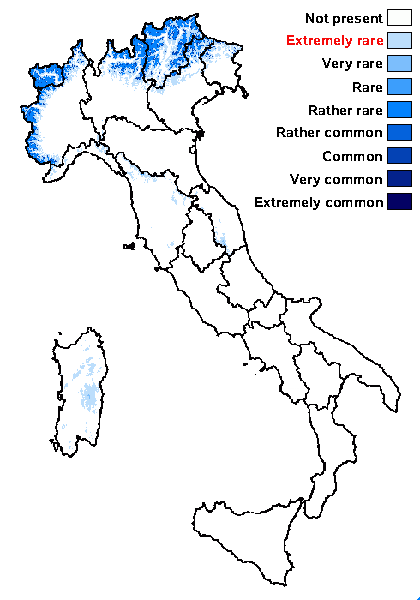
Predictive model
Herbarium samples
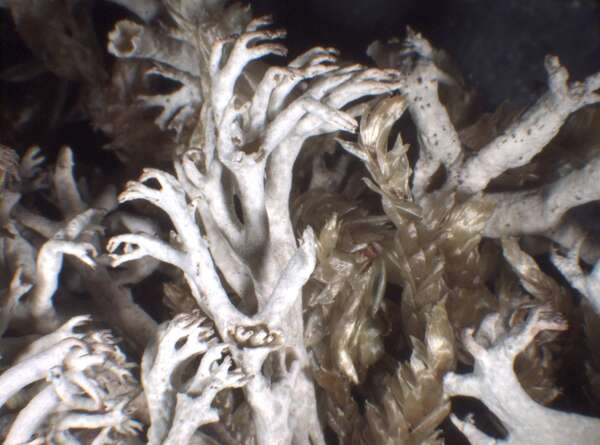

P.L. Nimis; Owner: Department of Life Sciences, University of Trieste
Herbarium: TSB (25106)
2003/02/15
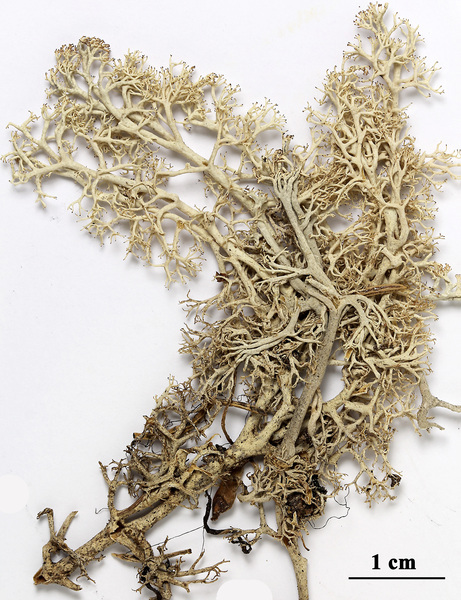
Felix Schumm- CC BY-SA 4.0
[19513], Schweiz, Wallis, Champex westl. Orsières, Val de Arpette, Granituntergrund, ca. 1700 m. Leg. et det. F. Schumm 22.08.1996 (SVBL-Exkursion).
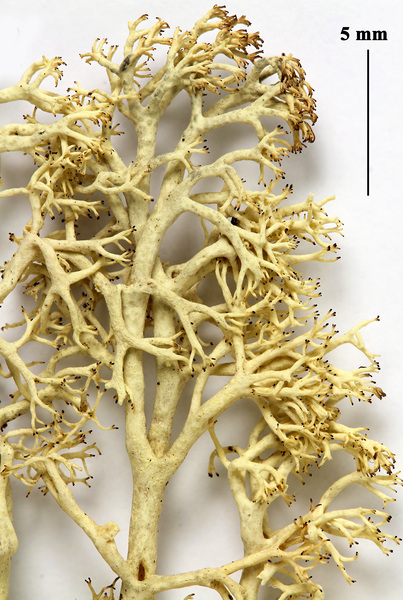
Felix Schumm- CC BY-SA 4.0
[19513], Schweiz, Wallis, Champex westl. Orsières, Val de Arpette, Granituntergrund, ca. 1700 m. Leg. et det. F. Schumm 22.08.1996 (SVBL-Exkursion).
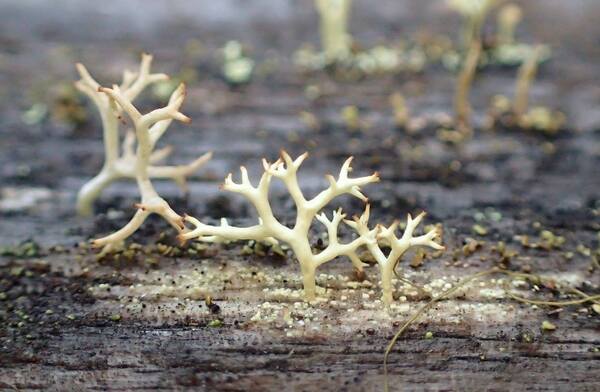

Curtis Randall Björk, - CC BY-SA 4.0
Sugarbowl-Grizzly Den Provincial Park, British Columbia, Canada
September 2017
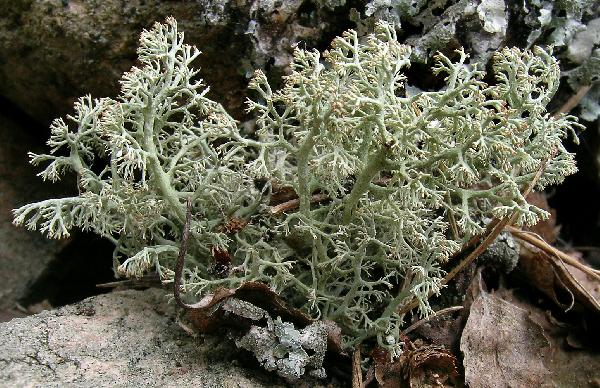
Ulrich Kirschbaum CC BY-SA 4.0 - Source: https://www.thm.de/lse/ulrich-kirschbaum/flechtenbilder
Sweden: Värmland.
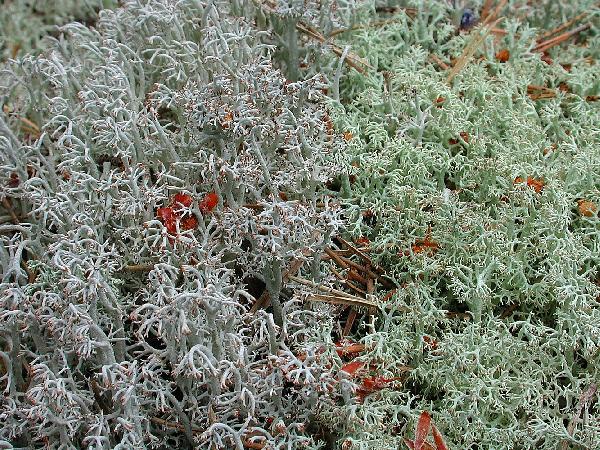
Ulrich Kirschbaum CC BY-SA 4.0 - Source: https://www.thm.de/lse/ulrich-kirschbaum/flechtenbilder
Sweden: Värmland.
with C. rangiferina (left)
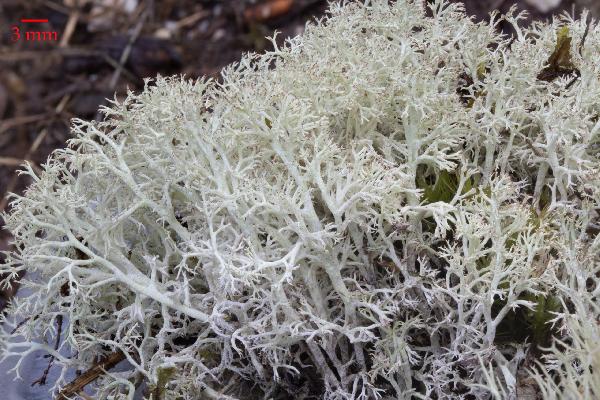
Marta González Garcia - Centro de Estudios Micologicos Asturianos
Spain, Faedo (Quirós-Asturias), 29-VIII-2023, sobre un talud rocoso ácido, en zonas umbrías, leg. M. González & det. Helena Rodríguez e Isaac Rubio, conf. A. R. Burgaz, MGG-46.

Marta González Garcia - Centro de Estudios Micologicos Asturianos
Spain, Faedo (Quirós-Asturias), 29-VIII-2023, sobre un talud rocoso ácido, en zonas umbrías, leg. M. González & det. Helena Rodríguez e Isaac Rubio, conf. A. R. Burgaz, MGG-46.

Marta González Garcia - Centro de Estudios Micologicos Asturianos
Spain, Faedo (Quirós-Asturias), 29-VIII-2023, sobre un talud rocoso ácido, en zonas umbrías, leg. M. González & det. Helena Rodríguez e Isaac Rubio, conf. A. R. Burgaz, MGG-46.
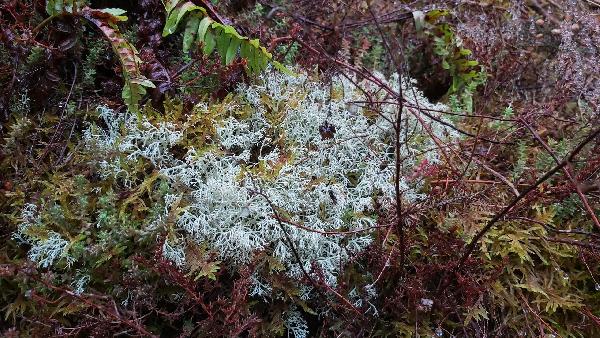
Marta González Garcia - Centro de Estudios Micologicos Asturianos
Spain, Faedo (Quirós-Asturias), 29-VIII-2023, sobre un talud rocoso ácido, en zonas umbrías, leg. M. González & det. Helena Rodríguez e Isaac Rubio, conf. A. R. Burgaz, MGG-46.

Marta González Garcia - Centro de Estudios Micologicos Asturianos
Spain, Faedo (Quirós-Asturias), 29-VIII-2023, sobre un talud rocoso ácido, en zonas umbrías, leg. M. González & det. Helena Rodríguez e Isaac Rubio, conf. A. R. Burgaz, MGG-46.

Marta González Garcia - Centro de Estudios Micologicos Asturianos
Spain, Faedo (Quirós-Asturias), 29-VIII-2023, sobre un talud rocoso ácido, en zonas umbrías, leg. M. González & det. Helena Rodríguez e Isaac Rubio, conf. A. R. Burgaz, MGG-46.
Growth form: Fruticose
Substrata: soil, terricolous mosses, and plant debris
Photobiont: green algae other than Trentepohlia
Reproductive strategy: mainly asexual, by thallus fragmentation
Commonnes-rarity: (info)
Alpine belt: rather rare
Subalpine belt: common
Oromediterranean belt: very rare
Montane belt: extremely rare
Submediterranean belt: absent
Padanian area: absent
Humid submediterranean belt: absent
Humid mediterranean belt: absent
Dry mediterranean belt: absent

Predictive model
| Herbarium samples |


P.L. Nimis; Owner: Department of Life Sciences, University of Trieste
Herbarium: TSB (25106)
2003/02/15

Felix Schumm- CC BY-SA 4.0
[19513], Schweiz, Wallis, Champex westl. Orsières, Val de Arpette, Granituntergrund, ca. 1700 m. Leg. et det. F. Schumm 22.08.1996 (SVBL-Exkursion).

Felix Schumm- CC BY-SA 4.0
[19513], Schweiz, Wallis, Champex westl. Orsières, Val de Arpette, Granituntergrund, ca. 1700 m. Leg. et det. F. Schumm 22.08.1996 (SVBL-Exkursion).


Curtis Randall Björk, - CC BY-SA 4.0
Sugarbowl-Grizzly Den Provincial Park, British Columbia, Canada
September 2017

Ulrich Kirschbaum CC BY-SA 4.0 - Source: https://www.thm.de/lse/ulrich-kirschbaum/flechtenbilder
Sweden: Värmland.

Ulrich Kirschbaum CC BY-SA 4.0 - Source: https://www.thm.de/lse/ulrich-kirschbaum/flechtenbilder
Sweden: Värmland.
with C. rangiferina (left)

Marta González Garcia - Centro de Estudios Micologicos Asturianos
Spain, Faedo (Quirós-Asturias), 29-VIII-2023, sobre un talud rocoso ácido, en zonas umbrías, leg. M. González & det. Helena Rodríguez e Isaac Rubio, conf. A. R. Burgaz, MGG-46.

Marta González Garcia - Centro de Estudios Micologicos Asturianos
Spain, Faedo (Quirós-Asturias), 29-VIII-2023, sobre un talud rocoso ácido, en zonas umbrías, leg. M. González & det. Helena Rodríguez e Isaac Rubio, conf. A. R. Burgaz, MGG-46.

Marta González Garcia - Centro de Estudios Micologicos Asturianos
Spain, Faedo (Quirós-Asturias), 29-VIII-2023, sobre un talud rocoso ácido, en zonas umbrías, leg. M. González & det. Helena Rodríguez e Isaac Rubio, conf. A. R. Burgaz, MGG-46.

Marta González Garcia - Centro de Estudios Micologicos Asturianos
Spain, Faedo (Quirós-Asturias), 29-VIII-2023, sobre un talud rocoso ácido, en zonas umbrías, leg. M. González & det. Helena Rodríguez e Isaac Rubio, conf. A. R. Burgaz, MGG-46.

Marta González Garcia - Centro de Estudios Micologicos Asturianos
Spain, Faedo (Quirós-Asturias), 29-VIII-2023, sobre un talud rocoso ácido, en zonas umbrías, leg. M. González & det. Helena Rodríguez e Isaac Rubio, conf. A. R. Burgaz, MGG-46.

 INDEX FUNGORUM
INDEX FUNGORUM
 GBIF
GBIF
 DOLICHENS
DOLICHENS
